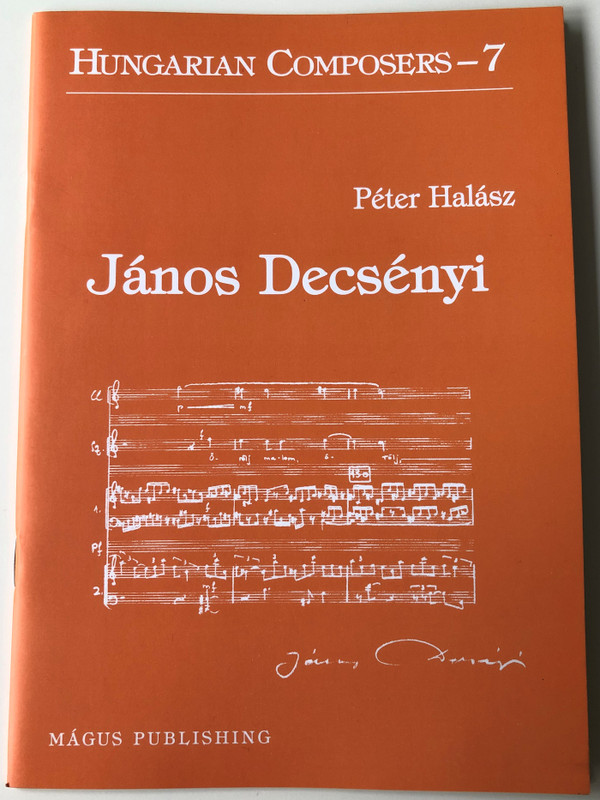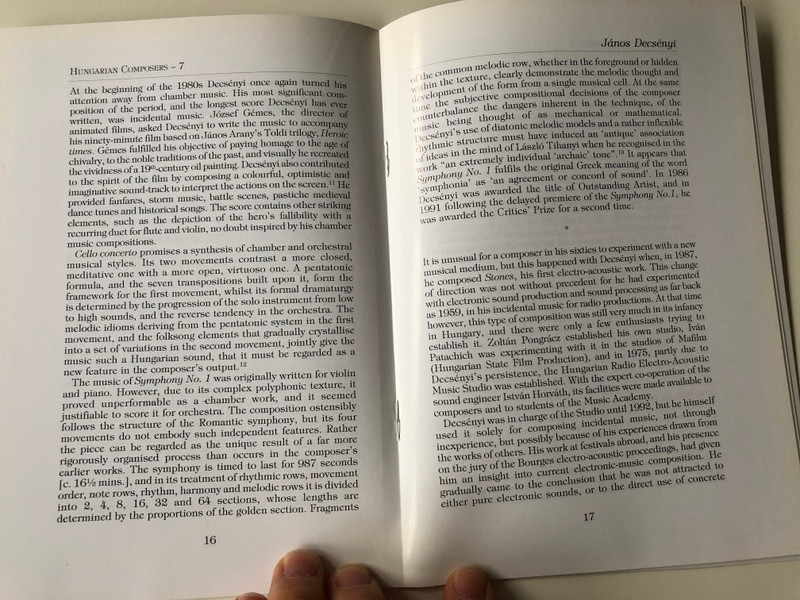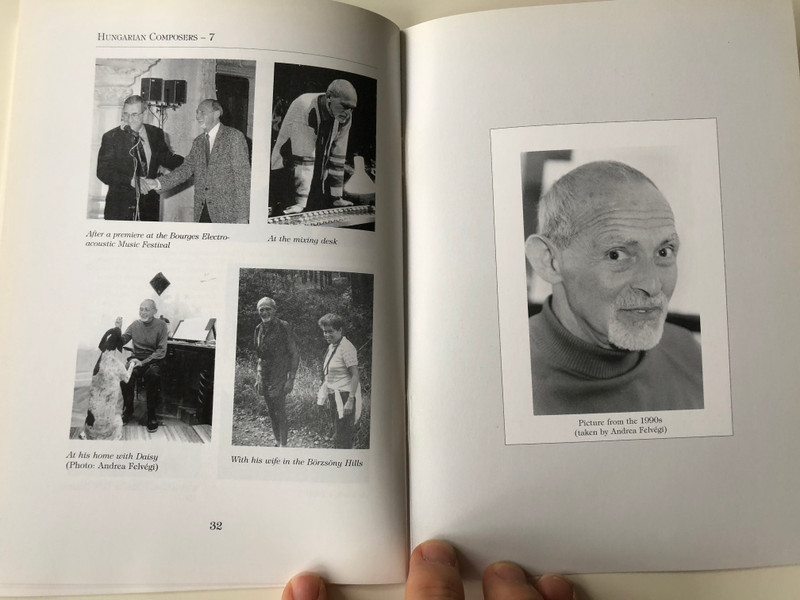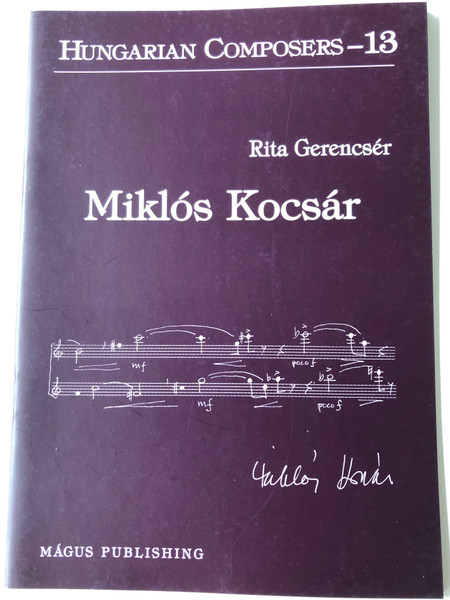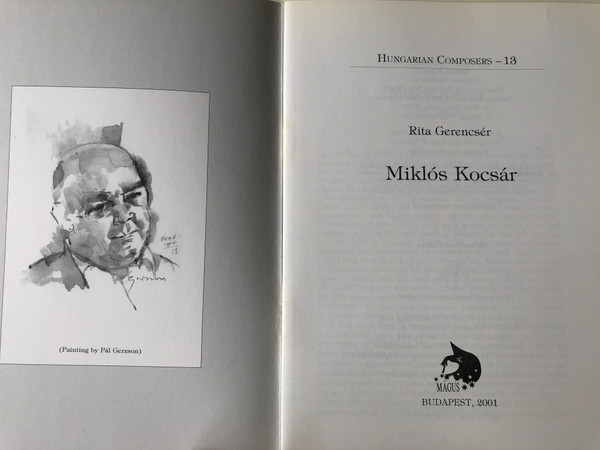Description
János Decsényi - Hungarian Composers - 7 by Péter Halász / Mágus Publishing
Product details:
- Paperback: 32 pages
- Publisher: Magus Kiado (2001)
- Language: English
- ISBN-10: 9638278617
- ISBN-13: 978-9638278616 / 9789638278616
Hungarian Description:
Decsényi János (1927-) a magyar zeneszerzés 1960-as években feltűnt nemzedékének egyik jeles képviselője. Igen sokoldalú alkotó, akinek életművében a hűvös gondolatiság és a fűtött kifejezés, az újítások iránti érdeklődés és a hagyomány folytatásának igénye egymást feltételezve alkot feszült egyensúlyt. Zenéjét a társművészetekre (Csontváry képek), sőt a filozofikumra (Gondolatok – nappal, éjszaka) való fogékonyság jellemzi. Szívesen fordul ihletért az antikvitáshoz (Sírfelirat Aquincumból) vagy a magyar irodalom emlékeihez (Régi magyar szövegek). Elektronikus zenei termésében a soundscape, a zenei eszközökkel megmunkált természeti hangokkal ábrázolt „hangtáj” műfaja az uralkodó.
About the Composer:
János Decsényi was born in 1927 in Budapest. He studied piano under Magda Vásárhelyi and composition under Rezső Sugár at Conservatory and graduated from Endre Szervánszky’s composition department of the Liszt Ferenc Academy of Music. Since 1951 he has been on the staff of Hungarian Radio’s Music Department.
His works display his intense interest in other art forms and the classics.
His works are, on the one hand, oriented towards the material: they test out many different instruments and several technical possibilities inherent in them – he carefully designs his compositions to fit the instruments. However, he also strives to achieve in them an emphatically beautiful sound and characteristic tonal colourings.
These two principles are juxtaposed in his works: the micro-structures are arranged within the whole so that their own, independent existence does not hinder and actually promotes the appearance of major surfaces of sound. The pieces that primarily depict colours and moods, are at deeper levels constructed according to a strict principle, not a single bar of the great colour patches being left as random simultaneities of sound.

